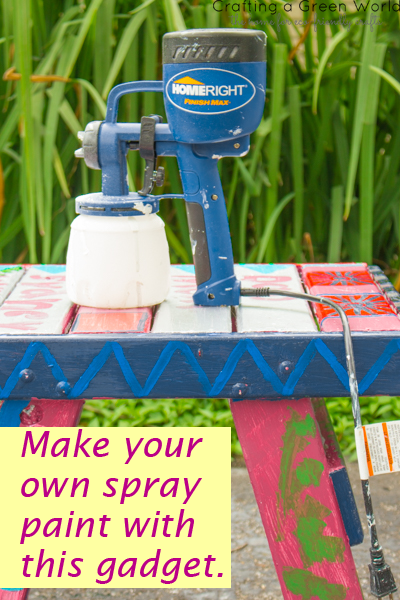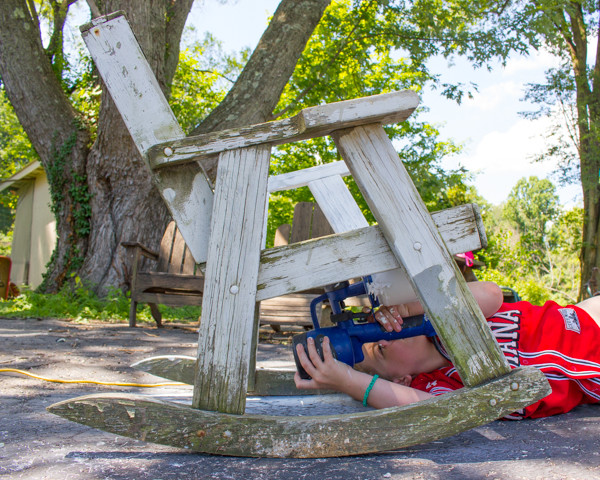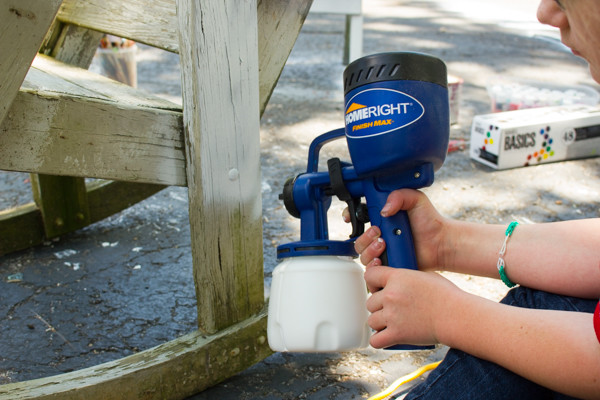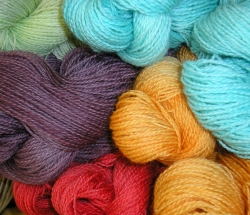
I love spray paint. It’s so easy, so efficient, so quick to use.
I also hate spray paint. Even water-based, “eco-friendly” spray paints are only a better choice than other spray paints; they aren’t nearly as environmentally friendly as non-aerosol paint.
Okay, bear with me for a sec, as I can’t let that last phrase pass without a short-ish chemistry lesson. Technically, the paint that I’m about to tell you about is also aerosol paint, as “aerosol,” chemically speaking, simply means particles suspended in air. Any paint that flies through the air in droplets is technically aerosol paint. However, spray paint uses a propellant gas to make this happen, and that gas is what’s bad news for the environment. I’m going to refer to the paint sprayer in this post as a non-aerosol spray paint simply because it does not use a propellant gas like other spray paints, but it is still an aerosol paint.
Thanks for letting me get that out of my system. Carry on!
The HomeRight Finish Max Fine Finish Sprayer (which is a ridiculous mouthful; they needed to have named it simply the HomeRight Paint Sprayer) transforms regular brush-on paint into spray paint. Instead of a propellant gas, however, it uses an air blower, allowing you to have the benefit of spray paint without the environmental impact. You’re also using less packaging and producing less waste overall, since this paint sprayer is reusable, and those spray paint cans just get trashed.
You won’t be surprised to know that of course a paint sprayer is more work to set up and clean up after than a can of spray paint. You’re encouraged to first fill the paint sprayer with water to practice painting, as there are some differences between the way that this paint sprayer sprays and the way that a a can of spray paint does; for one, you have to hold the paint sprayer a LOT closer to the piece that you’re painting, and that takes time to get used to. For another, you can adjust the way that the paint sprayer sprays by adjusting the nozzle, so you want to make sure that you have it correct before you begin. I also use this time to double-check that the paint sprayer was correctly cleaned last time and thus has good flow, and that there are no particles or dust in the workings that will come out with my paint.
You’re also supposed to use a funnel that comes with the sprayer to determine if your paint will need to be thinned for use in the sprayer. Not only did I immediately lose this funnel, however, but I also have a personal objection to thinning paint with water, which is what the instructions suggest. I just eyeball it, Bro. If the paint looks thicker than usual, then I simply don’t use it in the sprayer.
The actual operation of the paint sprayer is, in my opinion, easier and more comfortable than the operation of a can of spray paint. There’s a trigger mechanism instead of a nozzle to press, and this, for one, is MUCH easier for my kids and their little fingers. My kids do a lot of art activities, and it was years after they first wanted to spray paint before they had the finger muscles for it. This paint sprayer is a much easier option:

We have also had no problem spraying at weird angles, either straight down or straight up:

Also, the receptacle on this paint sprayer holds a lot of paint, so in theory you can paint for a long time without having to refill. In reality, however, I have to take the two plastic nozzles off of the sprayer, rinse them, and use a stiff brush to clean off the brass nozzle about every twenty or so minutes, as at around that time excess paint starts to build up around the nozzle and affect the flow. Instead of getting a fine spray, you’ll suddenly find yourself getting large drops, and you won’t know it’s coming until it happens. So keep track of the time and clean the nozzle prophylactically, if you don’t want to have to go over your work again.

In theory, you can also change colors whenever you want, although this involves pouring out the paint receptacle back into the paint can, rinsing and wiping the paint receptacle out very well, removing and rinsing both plastic nozzles, cleaning the brass nozzle with a stiff brush, and running soapy water, then clean water, through the sprayer to rinse the mechanics (use this same process to clean the sprayer at the conclusion of your job, as well). In reality, therefore, we tend to use this paint sprayer for larger, single color jobs. The paint sprayer comes out when I need to paint a piece of furniture. For a picture frame or a toy, I stick to the paintbrush.
And when I do get the paint sprayer out, I ask around the house for anyone who happens to want to paint anything in the particular color that I’m using. On the day that I took the photos for this post, for example, we ended up priming three pieces of deck furniture (the project that I originally intended to do), all the signage for the kids’ chicken coop, and three picture frames.
I’m not the world’s biggest fan of the look of spray paint–it’s fine for small pieces, but I think that something that has been spray painted just LOOKS spray painted, and unless that’s the effect that I’m going for, then I don’t really like that look–so my favorite thing about this paint sprayer is that fact that the results don’t look like spray paint. When you’re finished, the piece simply looks as if it’s been painted, albeit with a remarkable lack of brush strokes or my usual sloppiness about drips.
I did NOT receive the HomeRight Finish Max Fine Finish Sprayer free from anybody except for my mother, who bought it for me as a present. Yes, I do always ask for power tools for Christmas and my birthday.









Thanks, Julie. I like your idea of fun and will buy the paint sprayer instead of using “canned.” Enjoy!